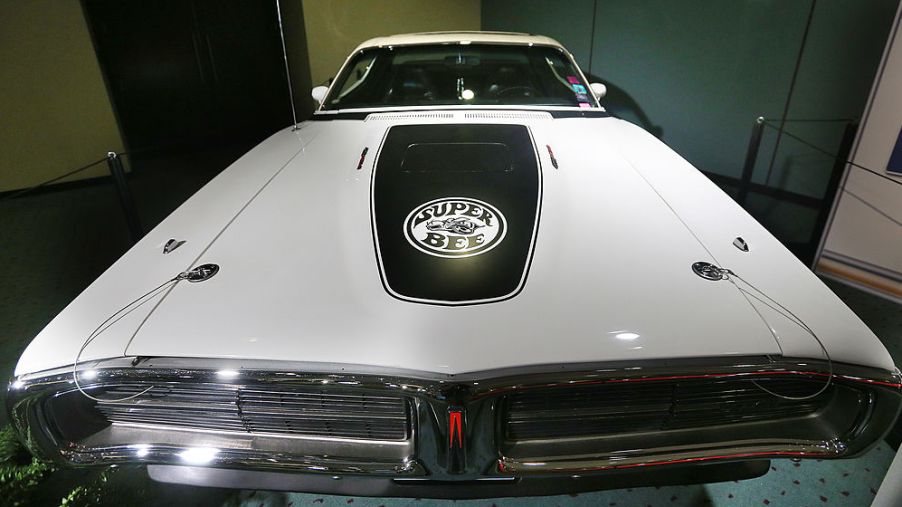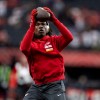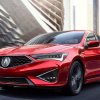
The Super Bee Is One of Dodge’s Forgotten Muscle Cars
In the world of automobiles, models come and models go. While some vehicles are impressive enough to stand the test of time, others are slowly forgotten in lieu of newer, better models. Though Dodge’s first budget muscle car helped pave the way to the impressive future it currently has, Dodge’s Super Bee was a brief moment in history that was soon forgotten. Or was it?
Dodge’s first budget muscle car
The 1960s brought an entirely new trend of vehicles to America. Decades of knowledge, engineering, and innovation helped broaden the market variety. And it was during this time that muscle cars were at their peak of popularity.
So when automaker Plymouth launched a budget muscle car in 1967, many other brands felt the pressure to move to affordability. And Dodge, better known for its sporty, performance cars than Plymouth, had to put out its own budget-friendly muscle car to compete.
According to Muscle Car Club, Dodge used its popular Coronet coupe as a base to design and create its own budget muscle car. Released in the spring of 1968, the Dodge Super Bee would give the Plymouth Road Runner a run for its money. After all, Dodge simply did “muscle” better.
The brief life of the Dodge Super Bee
When the Dodge Super Bee made its debut in 1968, it had a base price of around $3,000. Though slightly higher than the Road Runner’s sticker price, both cars used “the same basic chassis,” as well as the same engines.
The Dodge Super Bee came standard with an eight-cylinder engine that made 335 hp. An available Hemi, making 426 hp, cost owners $1,000 more. In order to keep the car budget-friendly, it came with minimal amenities. But Dodge did add heavy-duty suspension brakes, wide oval tires, racing stripes surrounding the tail, and a giant “Super Bee” emblem on the rear fenders.
One year later, in 1969, Dodge added a two-door hardtop variant to the Super Bee family, as well as a redesigned bumble bee stripe on the rear, “Scat Pack” badge on the grille and trunk, and a new Ramcharger cold-air induction system.
The 1969 model also came with a new engine option, which replaced carbs in the previous V8 with three two-barrel carbs. The 440 Six Pack only cost a few hundred more than the standard engine and could keep up with the Hemi.
The 1970 Super Bee received a redesign, to set it apart from its Coronet sibling. Newer styling and available options, including a variety of funky colors, made the car more individualized; regardless of its price.
The redesigned 1970 Dodge Super Bee could make up to 425 hp and could get to 60 mph in 5.3 seconds. Though Dodge provided more design and performance options, sales for the car weren’t great.
Dodge switched it up with the 1971 Super Bee, using a Charger platform as its base for the first time. Still a low-cost, high-performance muscle car, the 1971 Super Bee came with more optional equipment and an interior that matched the Charger 500.
Recognizing its dwindling sales, Dodge only made around 5,000 of the 1971 Super Bee. This production number is only around one-third of its production numbers for 1970, according to AllPar.
The forgotten Super Bee: is it forgotten for good?
With competitors like the Plymouth Road Runner and the newly-debuted Ford Cobra, Dodge’s budget muscle car had stiff competition. Dodge decided in 1971 to remove the Super Bee from its lineup and focus on other projects that proved more successful for the brand. But the Super Bee didn’t disappear completely.
To honor its roots and iconic muscle-car history, Dodge decided to bring the Super Bee back in the form of a performance package to the Charger. According to Charger ForumZ, Super Bee was one of three “retro” names that Dodge brought back to the Charger for the 2007 model year.
Resurrected from the 1970s, the Charger Super Bee offered the same styling, design, decals, and colors fans loved. Dodge ran the Charger Super Bee variant from 2007-2009.
But the company couldn’t stay away from its Super Bee roots and the nostalgic muscle car design made its way back into the lineup for the 2012 model year. From 2012-2014, offered the Charger Super Bee variant and stuck to its “budget” background of fewer amenities and higher performance. Still not ready to get rid of its humble (and loved) beginnings,
Dodge came back with the latest 2019 Dodge Challenger “Angry Bee” variant to keep the Super Bee alive. According to Motor1, the 2019 Dodge Challenger Angry Bee isn’t just nice to look at, with bee emblems, racing stripes, and more.
The resurrected version is also race legal, faster than ever before, and still within budget. Though the original Dodge Super Bee is no longer, it seems this car cannot be forgotten completely.


